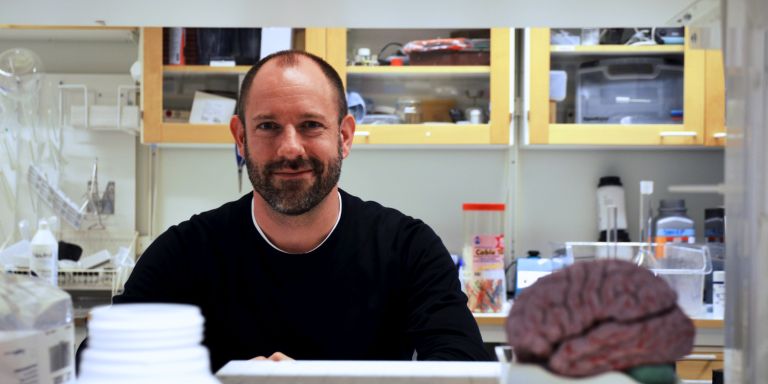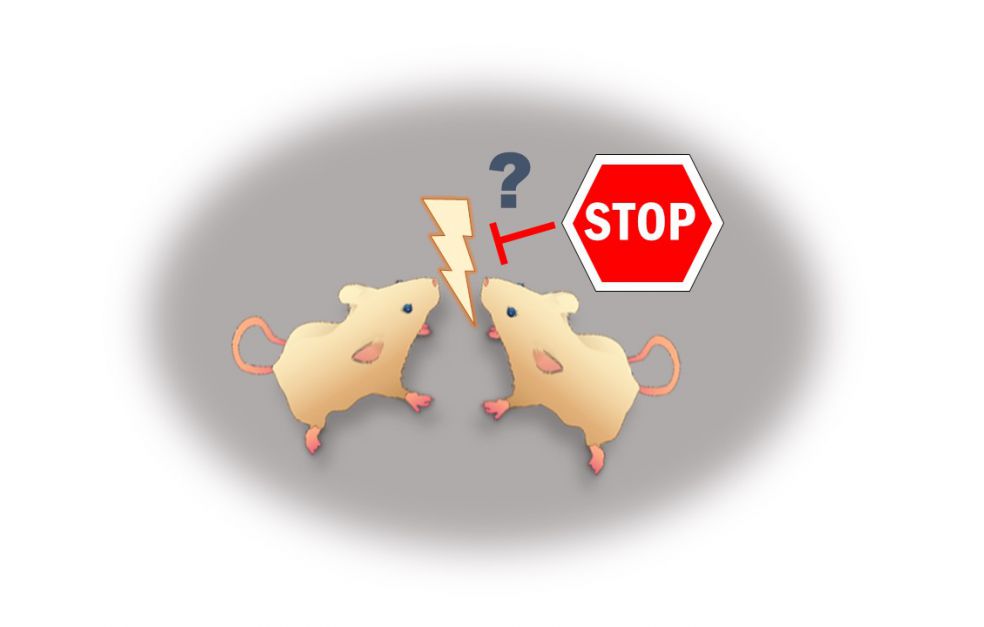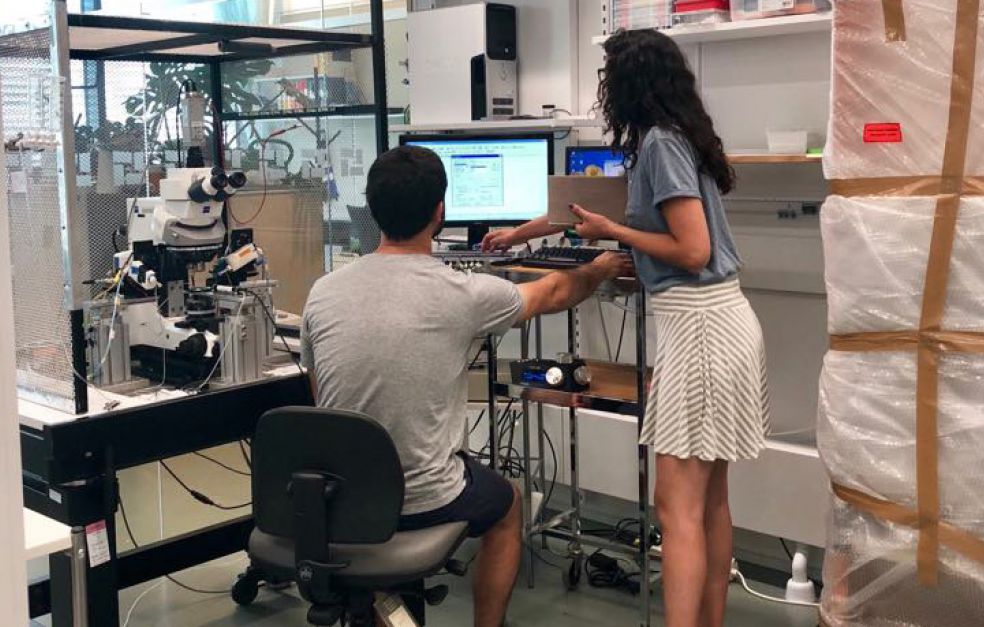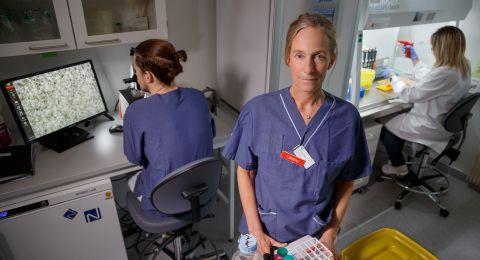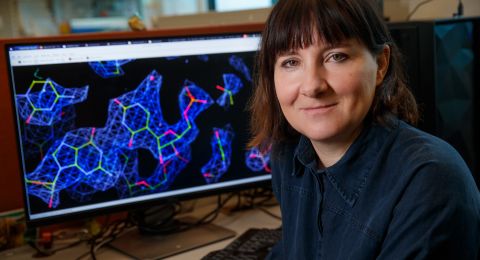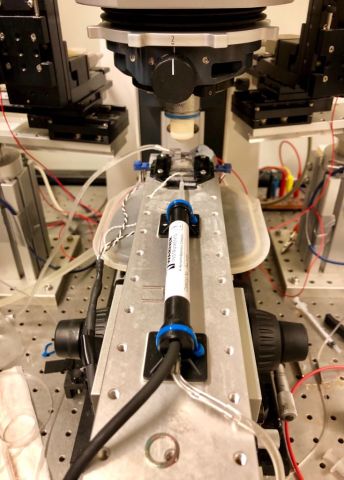
Project Grant 2020
Anger Management: Neuronal network organization, plasticity and sex-specificity in aggression and other social behaviors
Principal investigator:
Professor Christian Broberger
Co-investigator:
Karolinska Institutet
Emanuela Santini
Institution:
Stockholm University
Grant in SEK:
SEK 20 million over five years
Neuroscientist Christian Broberger and his research team have recently identified and characterized a group of neurons that are active when a male mouse becomes aggressive. The neurons are found in the hypothalamus – an older part of the brain in evolutionary terms.
“But knowing where in the brain cells associated with a given behavior can be found does not suffice to explain why the behavior occurs and how it is controlled,” Broberger says.
The hypothalamus is the part of the brain that monitors the body’s needs. It controls autonomous and endocrine functions such as hunger, thirst, libido and growth. Humans and other animals are highly social beings.
“We have not evolved to live in isolation. We socialize, argue, build trust, fall in love, have children and raise them. Knowledge about how the brain initiates and controls social behaviors is therefore a vital first step in understanding ourselves.”
Violence controlled from the brain
Broberger has received a grant from Knut and Alice Wallenberg Foundation to investigate how dynamic interplay between neurons can give rise to aggression in certain situations. The project is experimental, and is using mouse models.
“We have a broad repertoire of techniques for registering and manipulating the activity of specific neurons in the brain,” he explains.
The researchers are primarily interested in what happens when one mouse meets another. How does the brain code for the various components of behavior if the other mouse is a female or male, if they know each other or if one of them is dominant or submissive?
“When two males are placed in the same cage, it’s very likely they’ll start fighting. If one of them has been castrated, there typically won’t be a fight. The same goes if two females are placed in a cage together. Context and identity – and how the brain perceives these things – are critical in determining what happens in the meeting between two individuals.”
The researchers are conducting another subproject in which they are influencing animal behavior by activating or inactivating genes that are expressed in the recently discovered neurons.
“We want to identify situations in which the cells are activated and how attacks are concluded. It’s an interesting question from a clinical viewpoint. There are currently no drugs that effectively prevent aggressive behavior.”
The third project is studying how animals that are not normally bellicose can behave aggressively. When females meet for the first time, they usually become acquainted by sniffing one other, after which they leave each other in peace. But when the same female has offspring, she meets intruders with marked aggression.
“Our preliminary findings show that the recently discovered neurons are normally silent in females without young. But they are activated quite dramatically when the mice are suckling.”
Fighting males simply want to pit their strength against each other, and will stop when dominance has been established. But females feeding young remain aggressive.
It is already known that most male mice are aggressive, and that they become more so each time they fight.
“We don’t know why this is. It may be gene expression in these specific neurons.”
In the fourth and final project the researchers will be splitting aggressive and non-aggressive mice into two groups to compare gene expression and other traits of the neurons on which the study is centered. They will also be looking for differences in the animals’ behavior, and trying different ways of inhibiting violent behavior.
The non-aggressive males are observed at an early stage of their lives. Are they the largest or the smallest in the brood? What is their place in the pecking order? And what is their attitude to other individuals?
New treatments for aggression
Broberger developed an interest in the anatomy of the brain early on in his career when he was studying on a combined MD-PhD program at Karolinska Institutet (KI) in Solna, just north of Stockholm. As a postdoc at Yale, he learnt how to use electrophysiological investigation methods, and began to study the structure and function of brain networks.
Now heading his own research team at Stockholm University, he is delving deeper into the same topics. He is working with Wallenberg Academy Fellow Emanuela Santini, who has recently returned from Columbia University in the U.S. to set up her own team at KI.
“It’s great that we have managed to build a bridge for brain research between two institutions. Her team specializes in molecular methods; in my group we lean towards techniques for studying physiology.”
Broberger hopes the project will show how inherited behaviors are organized and shaped, and how differences in the brain can give rise to different patterns.
“At present neither drugs nor psychotherapy are effective against behaviors of this kind. More detailed knowledge of how the brain’s networks control aggression and other social behaviors may help in the development of new drugs and better behavior-based therapies.”
Text Carin Mannberg-Zackari
Translation Maxwell Arding
Photo Mika Nitz Pettersson, privat
